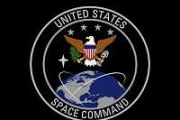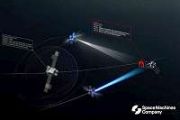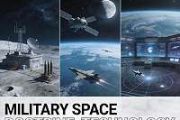
Copernical Team
India space agency to launch its heaviest satellite
This request seems a bit unusual, so we need to confirm that you're human. Please press and hold the button until it turns completely green. Thank you for your cooperation!
Press and hold the button
If you believe this is an error, please contact our support team.
185.132.36.159 : 47f8b9bb-d9f2-4eff-9534-d325b89c
With more moon missions on the horizon, avoiding crowding and collisions will be a growing challenge
This request seems a bit unusual, so we need to confirm that you're human. Please press and hold the button until it turns completely green. Thank you for your cooperation!
Press and hold the button
If you believe this is an error, please contact our support team.
185.132.36.159 : 0406d400-e7dc-4ffe-b109-7b9ea381
China says it's on track to land astronauts on the moon by 2030 ahead of space station mission
This request seems a bit unusual, so we need to confirm that you're human. Please press and hold the button until it turns completely green. Thank you for your cooperation!
Press and hold the button
If you believe this is an error, please contact our support team.
185.132.36.159 : 364e1bf2-d475-4540-8683-9e913fe0
Sentinel-1D pre-launch media briefing
 Video:
00:45:45
Video:
00:45:45
Follow the online briefing on the launch scheduled for 4 November 2025. The Copernicus Sentinel-1 mission delivers radar images of Earth’s surface. It is vital for disaster response teams, environmental agencies, maritime authorities, climate scientists.
ESA Space Safety Fleet
 Image:
ESA Space Safety Fleet
Image:
ESA Space Safety Fleet X-59 Completes First Flight in Quest to Reduce Supersonic Boom
 Lockheed Martin Skunk Works and NASA achieved the first flight of the X-59 supersonic aircraft, marking a step toward commercial supersonic travel over land. The aircraft departed from U.S. Air Force Plant 42 in Palmdale, California, and landed at NASA's Armstrong Flight Research Center in Edwards, California.
The X-59 demonstrated expected performance characteristics during its maiden fli
Lockheed Martin Skunk Works and NASA achieved the first flight of the X-59 supersonic aircraft, marking a step toward commercial supersonic travel over land. The aircraft departed from U.S. Air Force Plant 42 in Palmdale, California, and landed at NASA's Armstrong Flight Research Center in Edwards, California.
The X-59 demonstrated expected performance characteristics during its maiden fli Strategic Partnership to Advance Real-Time Space Intelligence Services
 Leonardo S.p.a. and Unibap Space Solutions AB have launched a strategic partnership to develop advanced real-time space intelligence, surveillance, and reconnaissance systems. The collaboration targets integration of Unibap's edge computing platforms with Leonardo's future Earth observation infrastructures and enhancement of Unibap's systems to meet demanding mission criteria.
Leonardo is
Leonardo S.p.a. and Unibap Space Solutions AB have launched a strategic partnership to develop advanced real-time space intelligence, surveillance, and reconnaissance systems. The collaboration targets integration of Unibap's edge computing platforms with Leonardo's future Earth observation infrastructures and enhancement of Unibap's systems to meet demanding mission criteria.
Leonardo is Lunar Lander Testing Campaign Builds Confidence for Griffin-1 Moon Landing
 Astrobotic is preparing for the Griffin-1 lunar landing by applying a rigorous "test like you fly" methodology designed to validate every aspect of its Guidance, Navigation, and Control system. Each subsystem, including sensors and flight software, undergoes evaluation in conditions closely mirroring those anticipated during descent and landing on the Moon.
The Griffin-1 GNC integrates Ter
Astrobotic is preparing for the Griffin-1 lunar landing by applying a rigorous "test like you fly" methodology designed to validate every aspect of its Guidance, Navigation, and Control system. Each subsystem, including sensors and flight software, undergoes evaluation in conditions closely mirroring those anticipated during descent and landing on the Moon.
The Griffin-1 GNC integrates Ter Radio view of Milky Way gains new detail in southern sky survey
 Astronomers from the International Centre of Radio Astronomy Research (ICRAR) have created the largest low-frequency radio colour image of the Milky Way ever assembled.
This spectacular new image captures the Southern Hemisphere view of our Milky Way galaxy, revealing it across a wide range of radio wavelengths, or 'colours' of radio light.
It provides astronomers with new ways to ex
Astronomers from the International Centre of Radio Astronomy Research (ICRAR) have created the largest low-frequency radio colour image of the Milky Way ever assembled.
This spectacular new image captures the Southern Hemisphere view of our Milky Way galaxy, revealing it across a wide range of radio wavelengths, or 'colours' of radio light.
It provides astronomers with new ways to ex Men show significant ocular changes after space travel
 A new study led by Rachael D. Seidler, director of the University of Florida's Astraeus Space Institute, examined how factors such as sex, age, and body metrics relate to brain and eye changes in astronauts after space travel. The research, published in npj Microgravity, is among the first to detail sex-related physiological responses to spaceflight. Data showed that female astronauts exhibited
A new study led by Rachael D. Seidler, director of the University of Florida's Astraeus Space Institute, examined how factors such as sex, age, and body metrics relate to brain and eye changes in astronauts after space travel. The research, published in npj Microgravity, is among the first to detail sex-related physiological responses to spaceflight. Data showed that female astronauts exhibited 


































